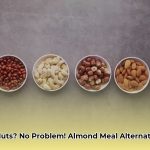Want to bake cakes so light and fluffy they practically float? High-ratio shortening is your secret weapon. This guide will show you exactly what it is, why it’s better than regular shortening for certain things, and how to use it to make amazing cakes, frostings, and more. We’ll break down the science in an easy-to-understand way, with step-by-step instructions and tips for bakers of all levels. Get ready to take your baking to the next level!
High Ratio Shortening: Your Secret to Super Fluffy Cakes – Unveiling Baking Magic
Ever wondered how to bake cakes that are so light and airy, they practically melt in your mouth? The answer might just be high-ratio shortening (HRS). This isn’t your grandma’s shortening; it’s a special ingredient that can seriously upgrade your baking game. Let’s dive in and explore why this stuff is so amazing for cake texture and overall baking experience.
What Makes High-Ratio Shortening Special? – Exploring Unique Properties
Regular shortening contains a tiny bit of water – usually around 2-3%. But high-ratio shortening? It’s virtually 100% fat. That seemingly small difference makes a huge impact. Think of it like this: in baking, fat and water usually don’t mix well. They’re like oil and water, right? A good emulsifier acts like a tiny bridge, connecting these two, keeping your batter smooth and preventing separation. High-ratio shortening is a super-powered emulsifier (a substance that stabilizes an emulsion). It’s like having a strong, sturdy bridge that helps keep everything perfectly blended together. According to chefsresource.com, high ratio shortening has been specially formulated to contain emulsifiers and stabilizers. This translates to a much smoother batter, which in turn leads to a lighter, fluffier cake.
Why Choose High-Ratio Shortening? The Perks! – Delving into Baking Advantages
The main benefit is undeniably the texture! Cakes made with high-ratio shortening have a wonderfully tender and moist crumb. They’re light as a feather, yet delightfully rich. But it’s more than just the texture. These cakes are way more stable. You’re less likely to get cracks or unevenness. This stability extends beyond the cake itself; even your frosting will benefit. It will be smoother, less prone to melting, and just generally more luxurious. According to alacouch.com, high-ratio shortening creates lighter textures, reducing greasy aftertaste. Stovercompany.com also notes high ratio shortening produces light, fluffy baked goods.
Another plus is how well high-ratio shortening works with a high proportion of sugar and liquid. Many cake recipes include a generous amount, and this shortening handles it beautifully. You can create those decadent, intensely flavorful cakes without sacrificing that light and fluffy texture. It’s a win-win!
High-Ratio Shortening vs. Regular Shortening: A Side-by-Side Look – Detailed Comparison Chart
Let’s break down the key differences in a quick comparison:
| Feature | High-Ratio Shortening | Regular Shortening |
|---|---|---|
| Water Content | 0% | 2-3% |
| Emulsifying Power | Much stronger | Weaker |
| Cake Texture | Lighter, fluffier, more tender | Denser, potentially slightly drier |
| Sugar Tolerance | Excellent, handles large amounts beautifully | Lower tolerance, might affect texture. |
| Cost | Typically more expensive | Generally less expensive |
| Shelf Life | Likely longer due to lack of water content | May have a shorter shelf life |
Baking with High-Ratio Shortening: Your Step-by-Step Guide – Practical Baking Instructions
Now for the fun part – actually baking with it! It’s not a direct swap for regular shortening. You’ll probably need to tweak your recipes a bit, especially the liquid. Many bakers suggest starting with about ⅔ cup of high-ratio shortening for every cup of regular shortening you’d normally use. But remember, every recipe and every oven are a little different, so experimentation is your friend here! Cakedecorist.com also recommends two-thirds cup of high-ratio shortening for every cup required in the icing recipe.
Here’s a simple, step-by-step approach to help you conquer high-ratio shortening:
Step 1: The Test Run: Pick a favorite cake recipe. Don’t jump into a brand-new, complicated recipe right away. Start by substituting a small portion of the regular shortening with high-ratio shortening. This lets you see how it affects the batter’s consistency without risking a whole cake. If you are already experienced, you can follow a guide from professionals.
Step 2: Observe and Adjust: Pay close attention to the batter. Is it too thick and stiff? Slowly add a little more liquid (milk, buttermilk, or even water) a teaspoon (tsp) at a time, mixing well after each addition. If it seems too thin, you might gently incorporate a bit more flour.
Step 3: Bake a Small Batch: Before committing to the whole recipe, bake a small portion of your cake (maybe a small loaf pan instead of a full layer cake). This mini-cake gives you a quick preview of the texture and moisture level.
Step 4: Fine-Tuning: If your mini-cake is a bit dry, add a tablespoon (tbsp) or two of extra liquid next time you bake the full recipe. If it’s too moist, reduce the liquid slightly.
Step 5: Keep Notes: This is crucial! Keep track of every adjustment you make – the amount of high-ratio shortening used, the type and quantity of liquid added, etc. This becomes your personal recipe guide for future bakes!
Remember, mastering high-ratio shortening is a journey, not a race. Don’t be discouraged if your first attempt isn’t perfect. With a little practice and careful observation, you’ll be creating unbelievably light and airy cakes in no time. The results are well worth the effort!
How to Adjust Recipes Using High-Ratio Shortening – Expert Baking Techniques
Key Takeaways:
- High-ratio shortening (HRS) boasts superior emulsification, creating smoother batters and frostings.
- Its higher melting point allows for extended baking times and higher temperatures.
- You’ll achieve moister, lighter baked goods with HRS. It creates less of a greasy aftertaste.
- HRS is often more expensive and may require adjustments to existing recipes. Availability might also be a concern.
- Some colorings might interact poorly with HRS in icings.
Understanding High-Ratio Shortening – Deep Dive into Chemical Composition
What exactly is high-ratio shortening? Stovercompany.com says that it’s a specialized shortening formulated specifically for bakers & confectioners to contain 100% fat & zero moisture. This makes it ideal for creating incredibly moist and tender cakes, cupcakes, and frostings. Unlike regular shortening, HRS is formulated for superior emulsification. This means it blends better with liquids and other ingredients, resulting in a smoother, more consistent batter. According to chefsresource.com, Emulsifiers are substances that help mix ingredients that naturally separate, such as oil and water. Stabilizers, on the other hand, help maintain the structure and texture of baked goods.
Think of it this way: regular shortening is like a basic building block. HRS is like a supercharged version, engineered for performance.
The Benefits of Using High-Ratio Shortening – Highlighting Enhanced Baking Outcomes
The advantages of using high-ratio shortening are numerous. Expect fluffier cakes and lighter textures overall. The improved emulsification contributes to a smoother final product, free from the sometimes-greasy aftertaste associated with regular shortening. It often holds up better in higher-temperature baking. HRS allows for extended baking times due to its higher melting point. Alacouch.com also states High melting point makes it perfect for use in baked goods that require a longer baking time or are exposed to higher temperatures. Stovercompany.com also states high ratio shortening will resist cracking in lower temperatures.
How to Adjust Recipes Using High-Ratio Shortening – A Practical Recipe Conversion
Switching to HRS isn’t always a simple one-to-one substitution. How to adjust recipes using high-ratio shortening requires careful consideration. Here’s a step-by-step guide:
- Start Small: Begin by experimenting with smaller batches or substituting a portion of your regular shortening with HRS.
- Reduce Liquids: HRS can incorporate more liquid, so you might need to slightly decrease the amount of liquid called for in your recipe. Start with a 10-15% reduction and adjust as needed.
- Adjust Baking Time: The higher melting point of HRS may require a slight increase in baking time. Monitor your baked goods closely to ensure they are fully cooked.
- Experiment with Sugar: Depending on your recipe, you may even be able to increase the sugar slightly to further enhance the moisture and tenderness.
- Consider Your Recipe: The adjustments you make will depend heavily on the specific recipe. A cake recipe requires different adjustments compared to a cookie recipe. Always use your own judgment.
- Observe and Adapt: Pay close attention to the texture and consistency of your batter. You might need to make minor adjustments to achieve optimal results.
Potential Challenges – Addressing Common Issues
While HRS offers numerous advantages, there are potential challenges. The most common is cost; it typically costs more than regular shortening. Another issue sometimes reported is incompatibility with
- How To Balance Coaching And Personal Life For Well-Being - January 6, 2026
- Work Life Balance Coach Transforms Stress into Sustainable Well-being - January 5, 2026
- Work-Life Balance Solutions: Strategies for Achieving Personal and Professional - January 4, 2026
















